Setting off
Our ride from Tunja to Puerto Triunfo – in words and photos.
Steep climbs, colonial villages, and Colombia’s fast-fading glaciers—our latest ride took us from the heights of the Sierra Nevada del Cocuy to the Magdalena’s forgotten railroads. Here’s what we saw.
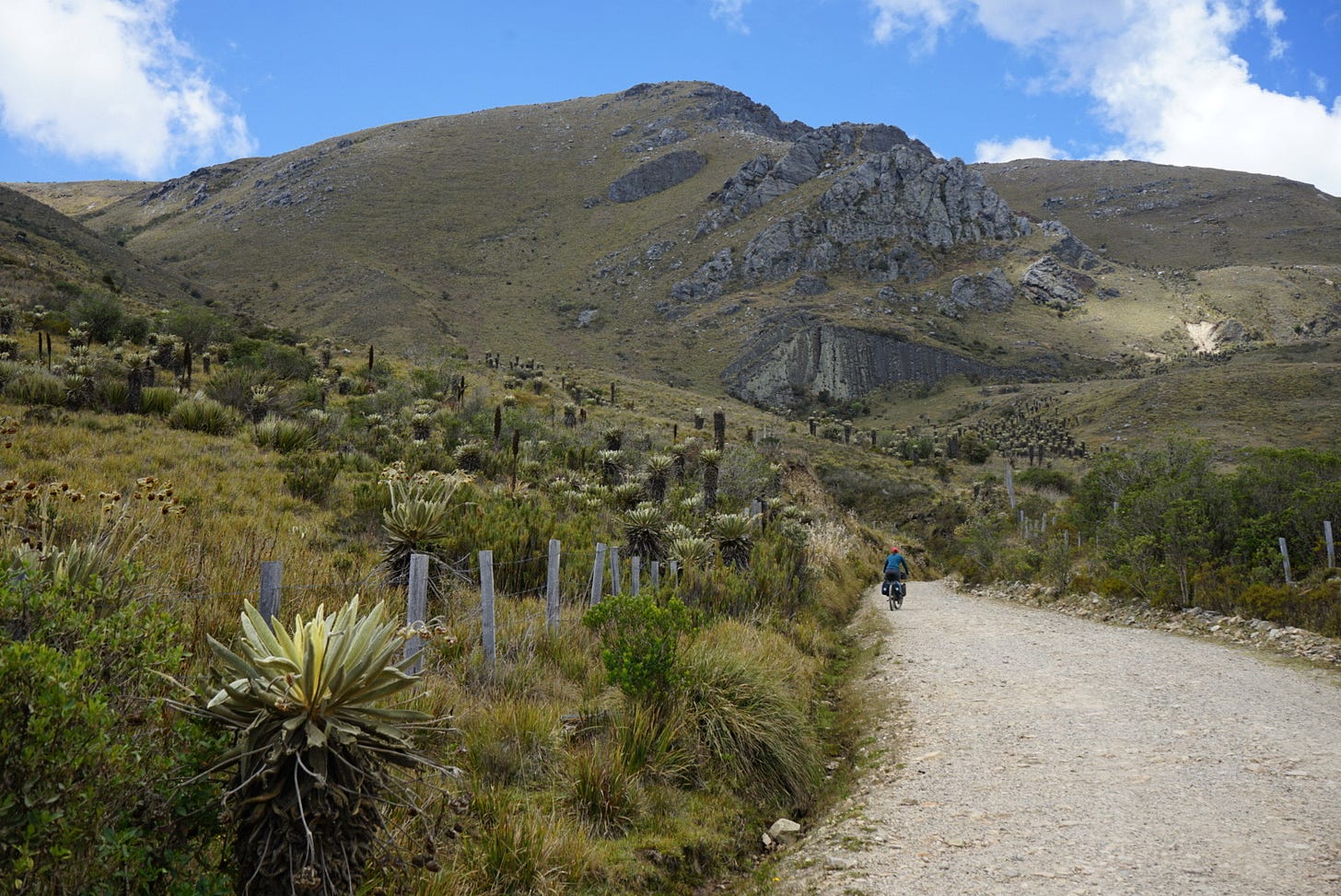
The first weeks were spent at altitudes of 2,000 to 4,000 meters – tierra fría, Colombia's (relatively) cold lands. Frank and Fabienne, friends from the Netherlands, joined us for the first 10 days. Both are avid cyclists and we moved quickly through mountains, canyons, and páramos despite some serious climbing. After saying goodbye to them, we descended to Colombia’s biggest river, the Magdalena, and followed its mercifully flat banks to Puerto Triunfo.
We took off from the city of Tunja, two hours north of the capital, Bogotá.
One of our first stops was Lago Tota, which at over 3,000 meters is the second biggest high-altitude lake in South America. On the weekends the lake is overrun by tourists from Bogotá. But we set up camp on a Tuesday and had the photogenic white beach to ourselves.
The next morning, we circled the lake and climbed out of the valley on a steep unpaved road before descending to Monguí, population 5,000.
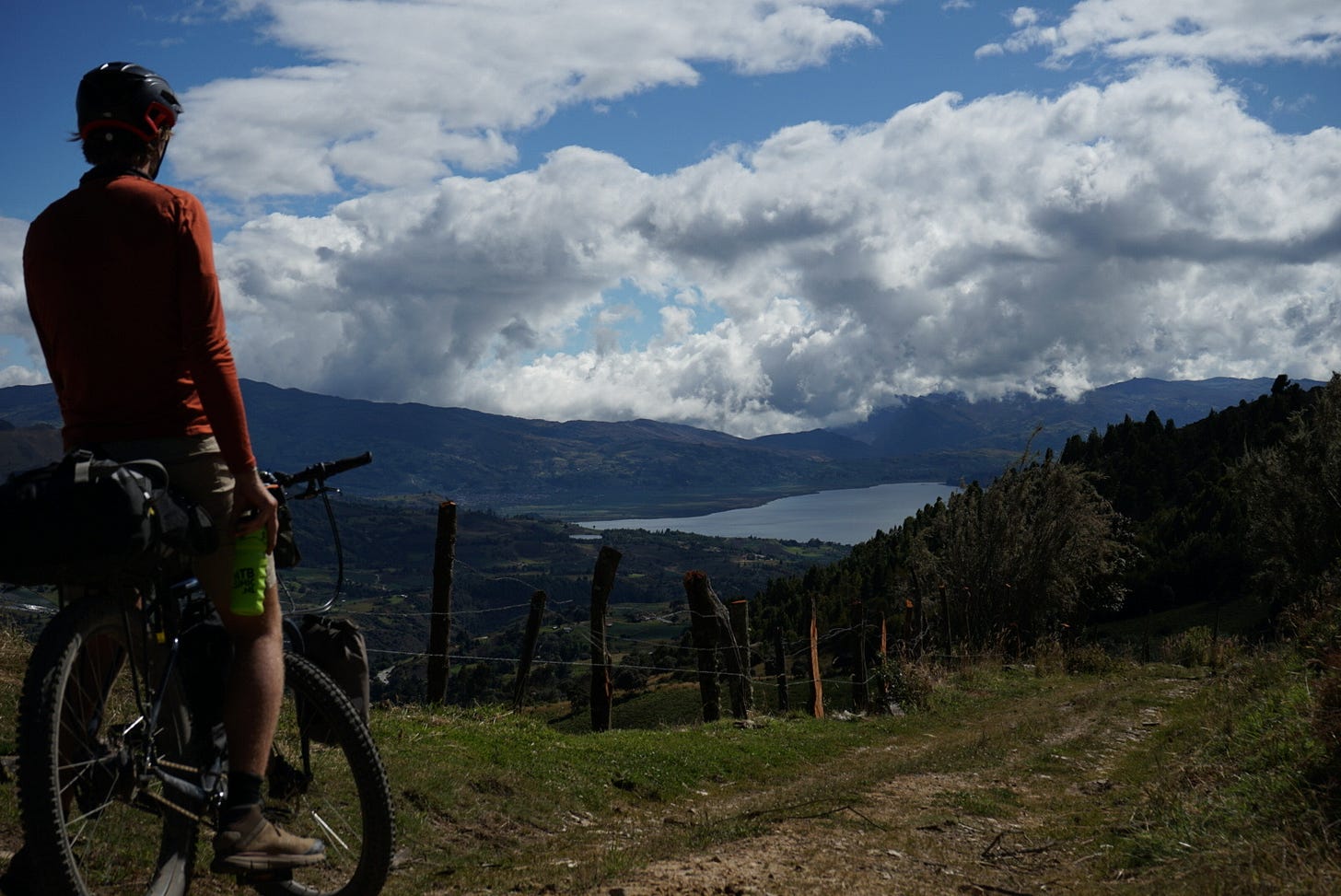
Founded in 1601, Monguí is a national heritage site that boasts stunning colonial architecture and a unique tradition—hand-crafting footballs. More than 30 factories, mostly mom-and-pop workshops, produce over half a million balls a year.
The tradition goes back to the 1930s when Colombia – then at war with Peru – deployed a young Monguí soldier to the tri-border area between Colombia, Peru, and Brazil. It’s unclear how and where exactly, but the soldier picked up the art of sewing footballs from the Brazilians and brought it back home.
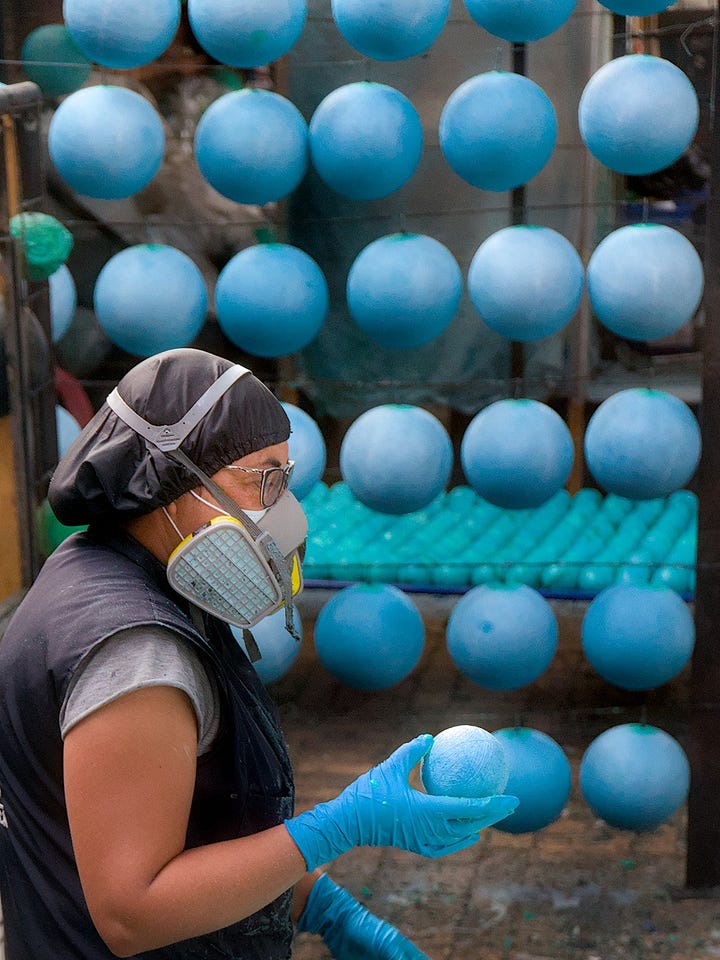
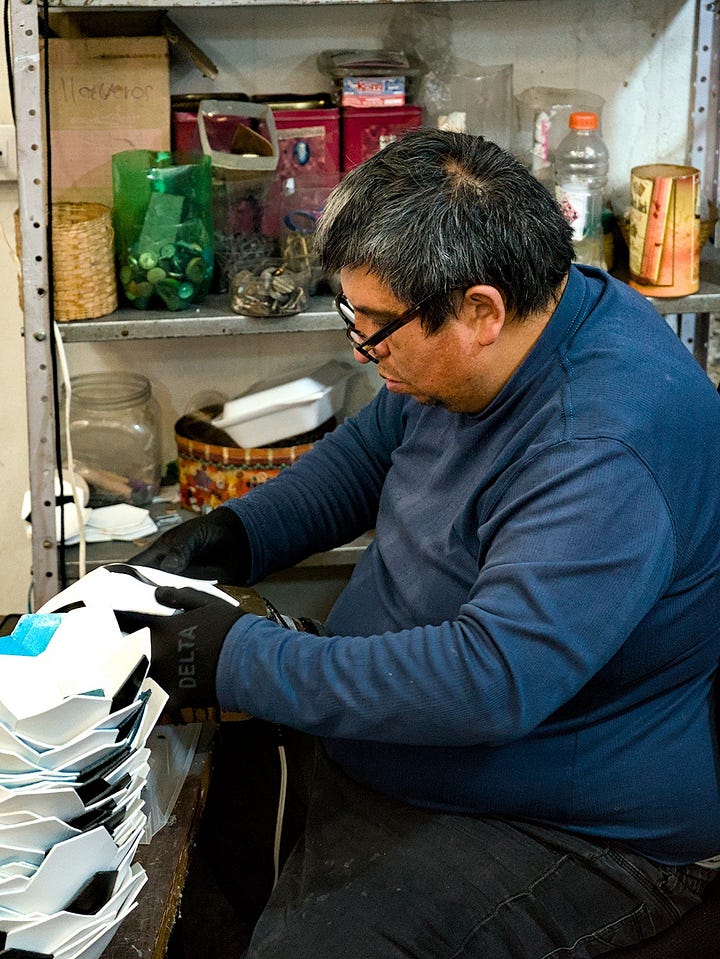
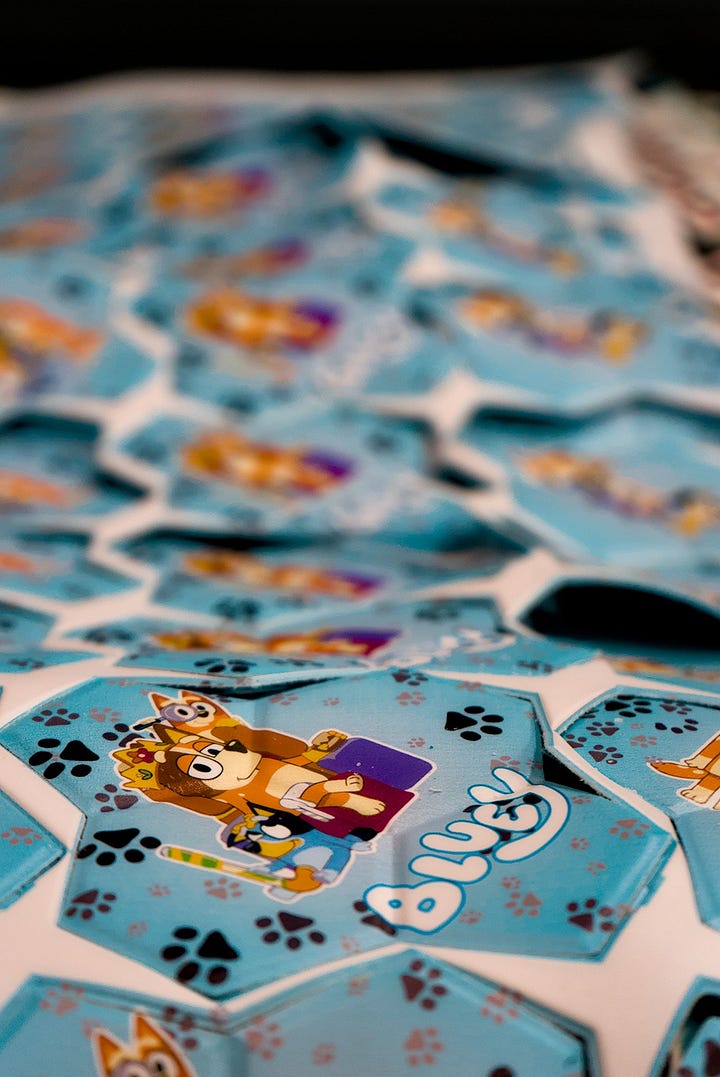
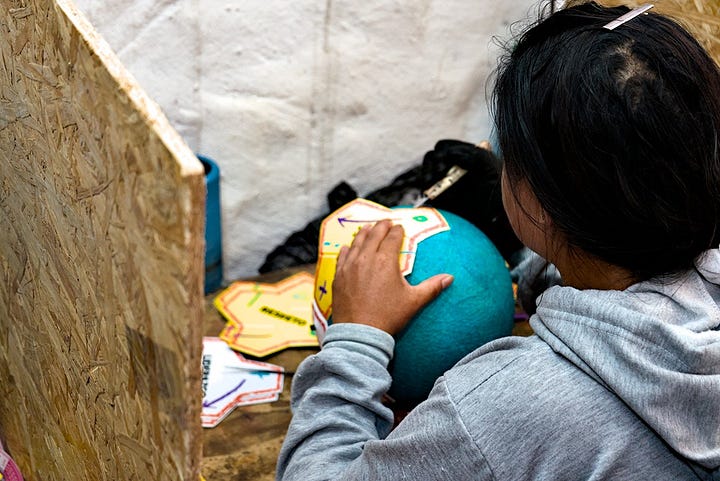
After leaving Monguí, we gradually climbed to the highest pass of the trip so far (4,100 meters) and caught our first glimpse of Sierra Nevada del Cocuy and its majestic glaciers. That high up, there is little wildlife, and the mountains mute surrounding noise, so we rode down to El Cocuy in a cinematic silence, shattered only by our bikes and the rustling of our dusty rain jackets.
In El Cocuy we checked into a once-stately but now rundown hotel on the main square. El Cocuy is a town frozen in time: its colonial houses - all painted white and green - have a serenity seldom seen in Colombia. The streets are quiet, many doors and windows shut, and there’s a notable absence of the cheap speakers blaring loud music so ubiquitous in other parts of the country.
Tourism, mostly from Bogotá, drives the local economy. But visitors don’t come to El Cocuy for the peace or architecture. Instead, they flock here on the weekends to hike the glaciers - for many Colombians their first encounter with snow.
These glaciers are rapidly melting and El Cocuy's tourism industry faces an uncertain future. Without snow, the hikes – and the town – will lose much of their appeal.
We spent our last night with Frank and Fabienne in La Uvita, arriving just as the town celebrated the Aguinaldo Uvitano. In theory, this is a religious Catholic celebration marked by communal prayer, but we found it to be closer to a mix of Saint Patrick’s Day and Halloween.
Townspeople came decked out in their most horrifying costumes - young men dressed as faceless “sexy” nurses padded their butts and stuffed balloons under their shirts. They spoke in high squeaky voices and accosted other men with flirtatious but aggressive demands to be bought drinks. Others dressed as clowns and carried large cuts of meat with which they tried to slap bystanders in the face.
After saying goodbye to Frank and Fabienne, we continued to Barichara where we planned to celebrate Christmas. With its cobblestone streets and beautiful sandstone houses, this storybook village looks like the inspiration for Disney’s “Encanto”.
The historic town is relatively wealthy. That wealth is built on tobacco profits and – more recently – tourism. But tobacco farming depleted the land, and the richness of Barichara’s architecture now falls against a backdrop of forest turning to desert.
Leaving Barichara, we entered “tierra caliente” and rode through scorching heat that would accompany us for weeks to come.
On a rocky, clay road between Socorro and Contratación, a couple on a motorcycle stopped us to chat. They invited us for coffee whenever we reached the town. “Just ask for us when you get there, everyone knows where we live,” they said.
In the end, we stayed with them for two days, fascinated by Contratación’s history as a leper colony and reality as a treatment center (that story coming soon).
We started the new year with some of the roughest roads either of us has ever ridden. Steep hills and boulders, covered in mud deep enough to hold the bikes up, made for slow progress.
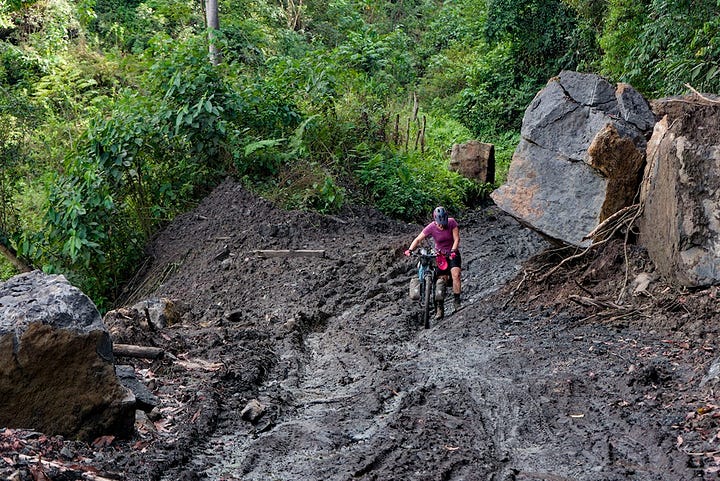
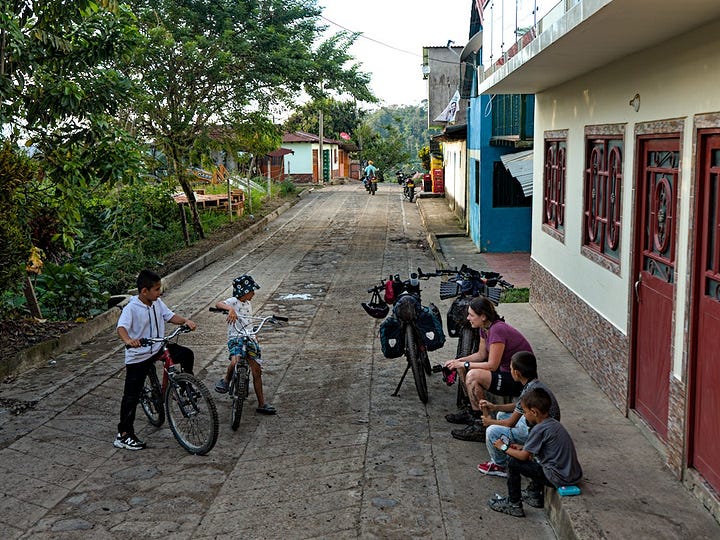
Finally on pavement again, we made our way to the Magdalena River, first crossing it by boat and later catching a ride on a cart along a stretch of railway.
Colombia's train system once connected internal trade centers to its ports. Along the Magdalena there are still some cargo trains today, but most of the network has been abandoned – it lays quiet, slowly falling into disrepair.
Locals have developed ingenious low-tech ways to put it to use, mounting bike or motorbike-driven carts onto the rails. As we rode along, sitting in plastic chairs and holding our bikes with one hand, Anastasia’s cap flew off. The driver paused our 5-kilometer ride to Santiago Berrio and casually jogged back to get it — just another day on the job.
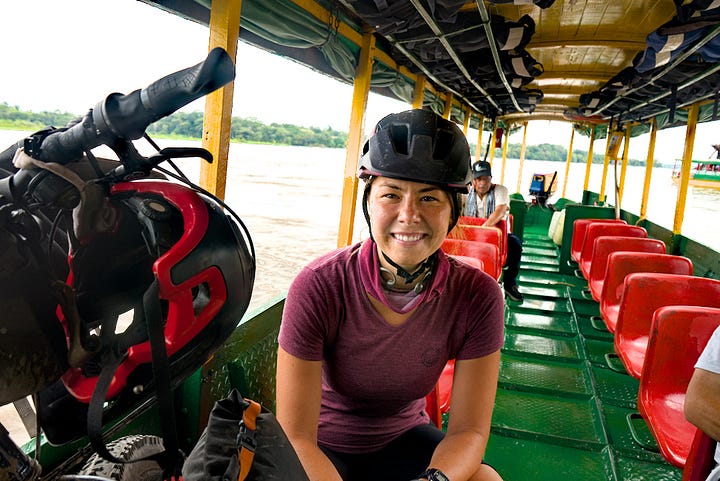
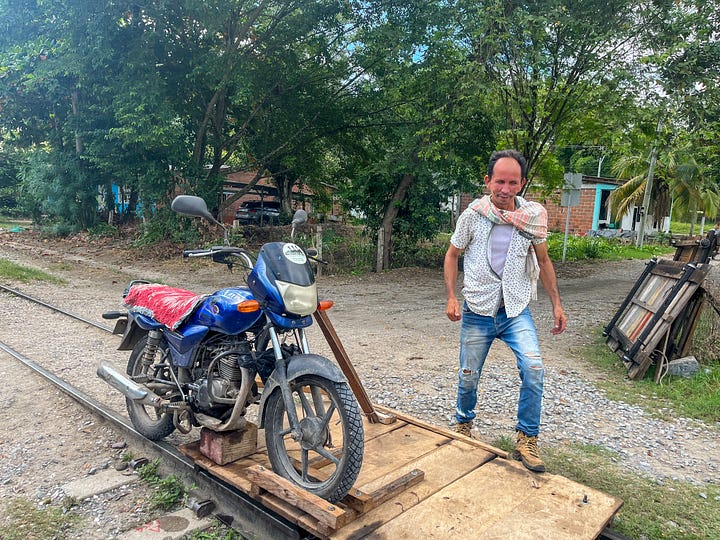
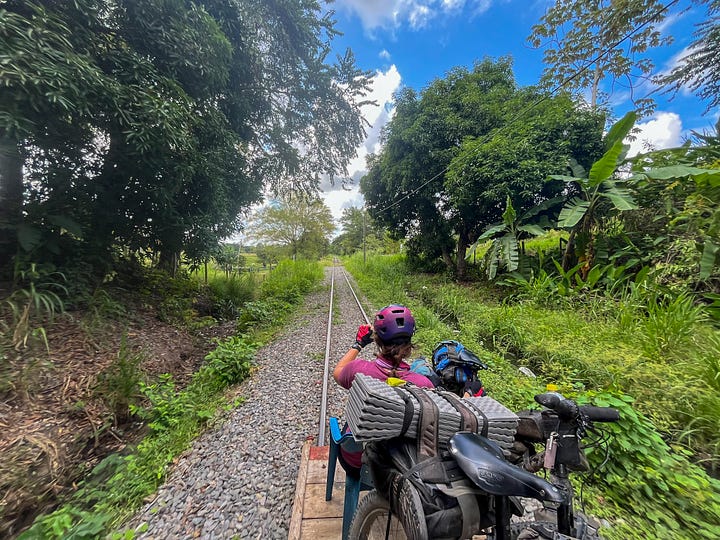

From Santiago Berrio, we cycled the final 25 kilometers inland to meet Garcés at the Rio Claro Reserve. Here we also met Jeny, a social leader from nearby Purto Triunfo, making it our final stop on this stretch of the trip.
Jeny’s poignant thoughts on forgiveness will be the topic of next Sunday's "In Their Own Words." Stay tuned.
Thinking of a similar trip? Check out our past rides or reach out! We offer bespoke cycling trip planning sessions and would love to help you organize your adventure.




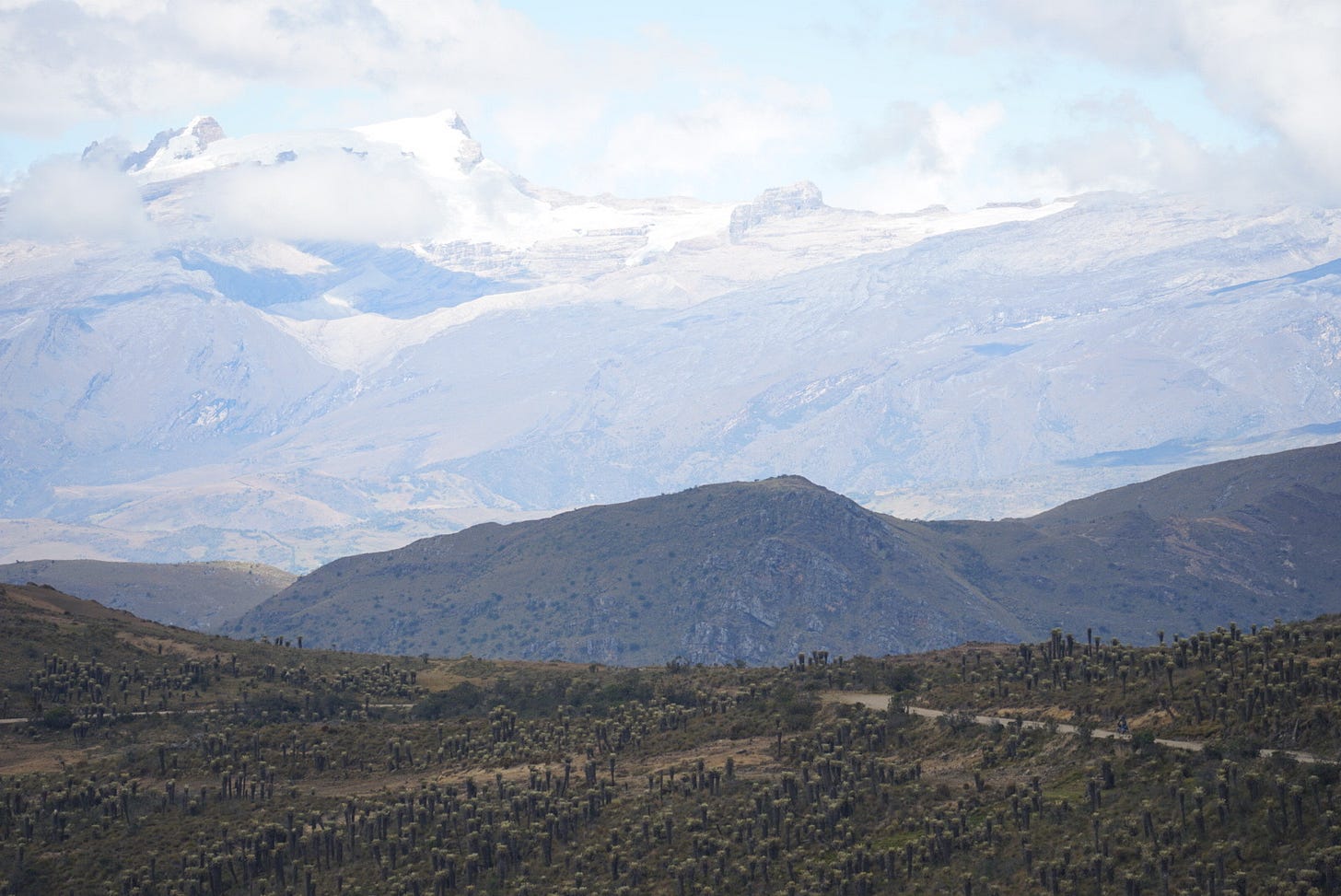
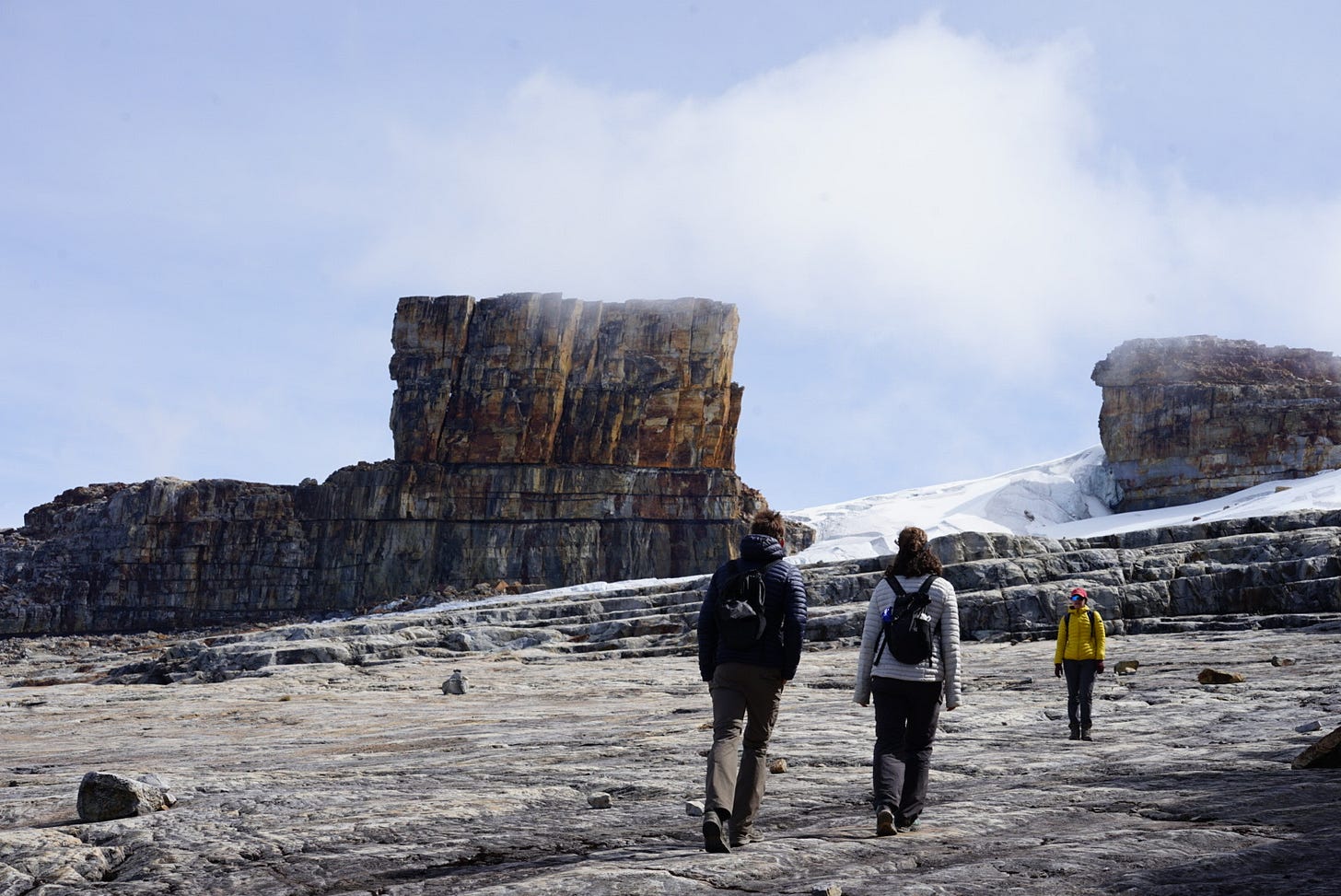
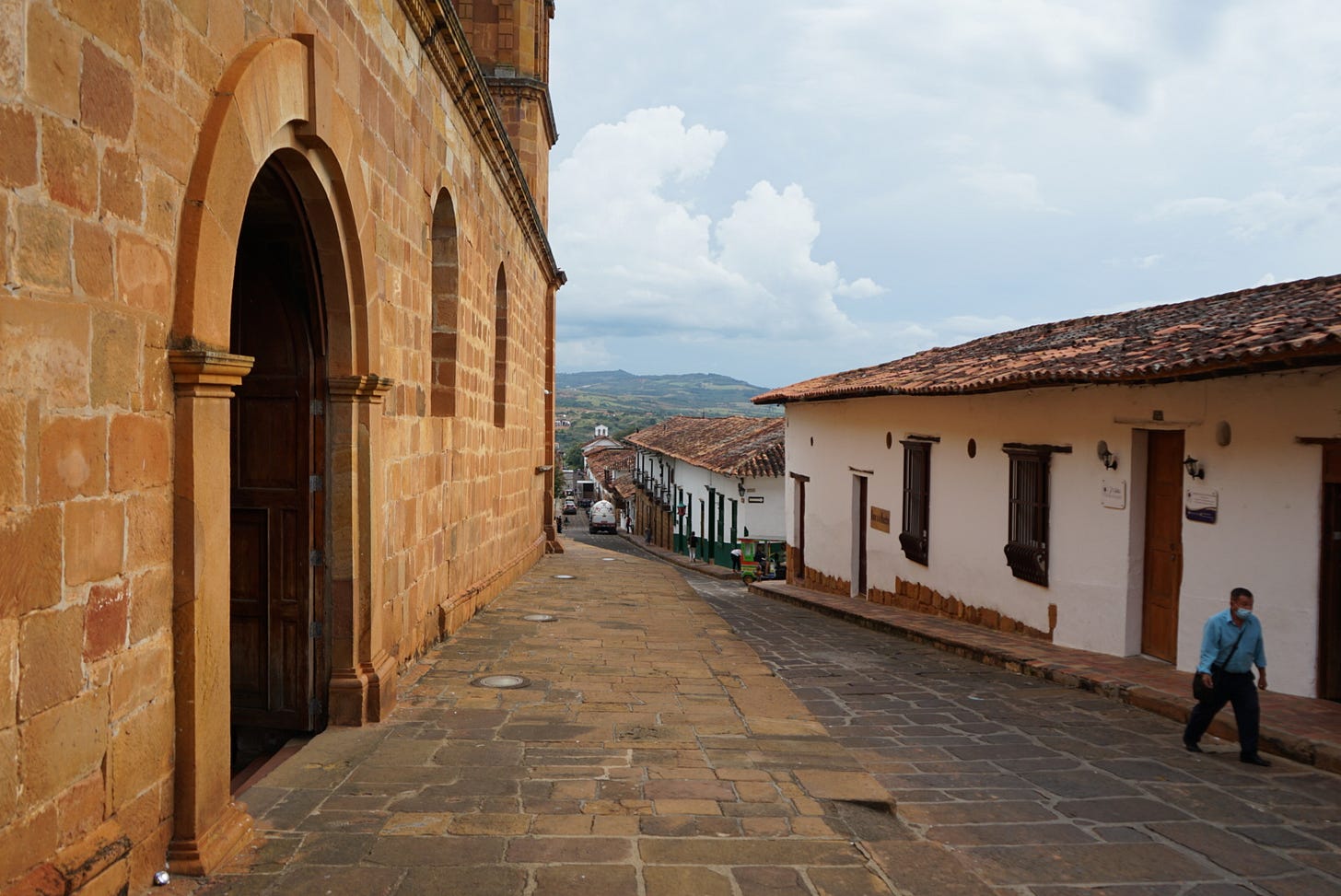
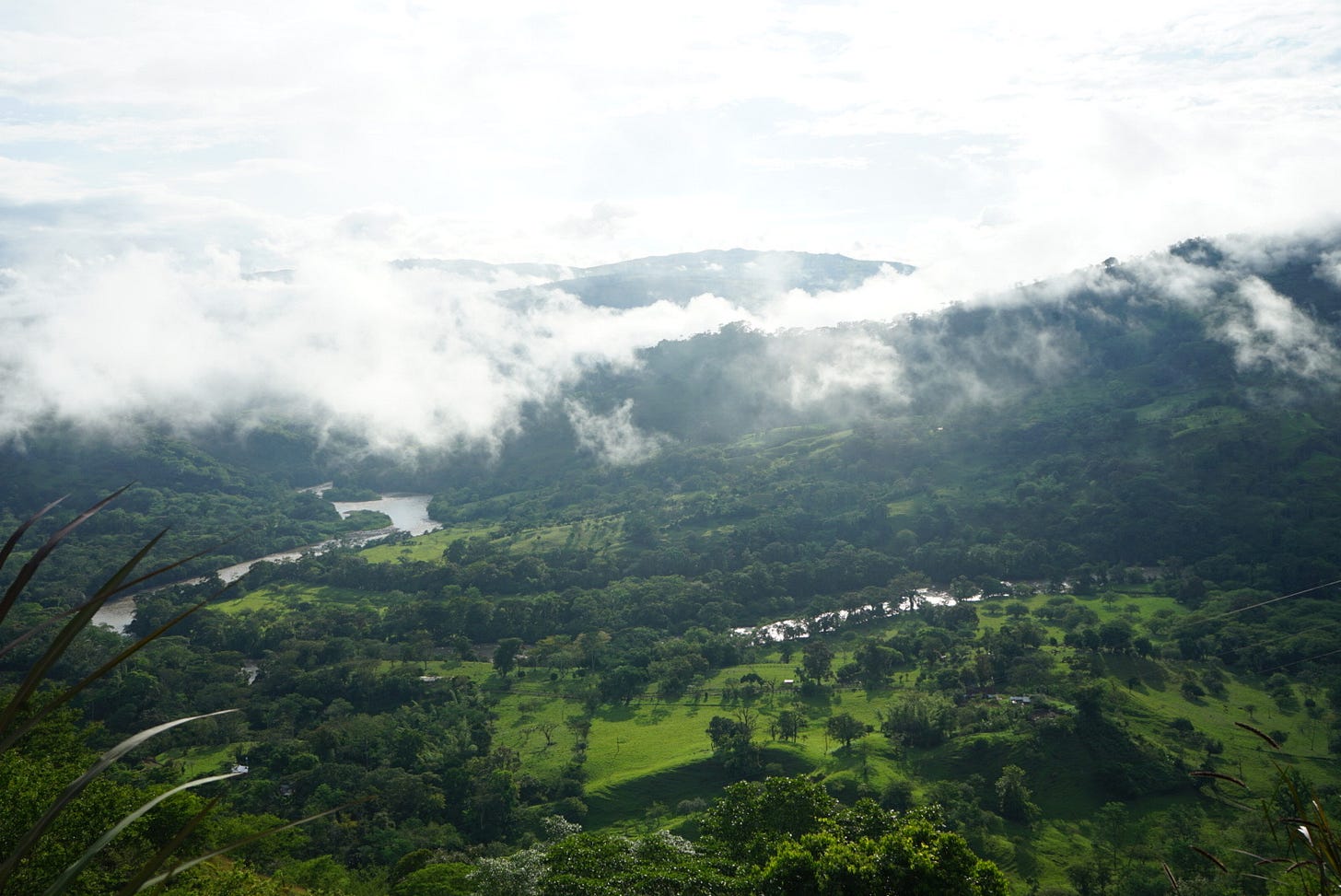
I love how you've combined your cycling with reporting! Those must be some killer climbs though.
Oof...happy riding though, I'm sure it will be beautiful!